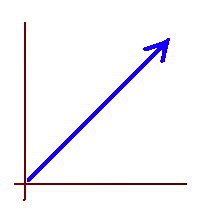Some search for doors, sometimes some do not want to see them
Last week I showed a student how to solve two linear equations in two unknowns. He knew perfectly well how to solve one equation with one variable but did not know how to combine two separate equations into one.
Also last week another student made the remark: “I do not know how to start solving this problem. What does ‘isoceles’ mean?” As soon as I gave him the definition of an isoceles triangle he successfully proceeded to solve the problem.
Earlier today another student asked me: “What is a frequency histogram?” When I explained the concept to him, he found it very clear. He said: “Just that? Documenting the numbers in a graph? That is pretty simple!”
Most times students take the initiative, and they spontaneously ask the meaning of terms they are not familiar with. Sometimes however, some students are near some sort of saturation point, and they do not want to even think about the remote possibility that maybe there is a concept they do not know, or a technique they have not seen, and they need this new information to solve the problem at hand. In these rare occasions they keep trying to solve the problem with only the insufficient tools they already have in their problem-solving toolkit.
Writer Kenneth Grahame said “The strongest human instinct is to impart information, the second strongest is to resist it.” So, I choose my words carefully when telling them there is something extra they absolutely need to know first before having any chance of solving the problem. Many times I let them finish their attempts, and check the solution in the back of the book so they realize their approach was wrong without me telling them so before hand, because that could increase their resistance.
There are several problem-solving techniques or approaches that seem indeed artificial, weird, or mystifying the first time around. Once you see how they work, and you use them a couple times, they become perfectly natural, and then you wonder why you never thought of that before.
A perfect example of this I saw also last week with another student.
It was a probability problem involving three coins. For me it is quite amazing to watch time and again how students keep trying to solve these problems by reasoning only about the three separate coins, as if the relevant probability space had only three points. The strong insistence in this naive approach is only matched in its consistency by the strong surprise students show the first time you show them the full eight-point probability space by branching out the development of the experiment at each successive flip, and recording the eight different combination triples. It is really interesting. Somehow these once missing pieces of information act like doors to a whole new realm of math knowledge when they are presented and opened. Many times the student’s reaction reminds me of that feeling of “Wow! I never thought that was a door!” I get when watching some sci-fi movies.
Quantum Interference Loss via Path Encoding and Recovery by Quantum Erasure
-
If we regard interference and entanglement as the most distinctive features
of the quantum world, then “which-way” experiments lie at the heart of
quantum ...
1 day ago





No comments:
Post a Comment